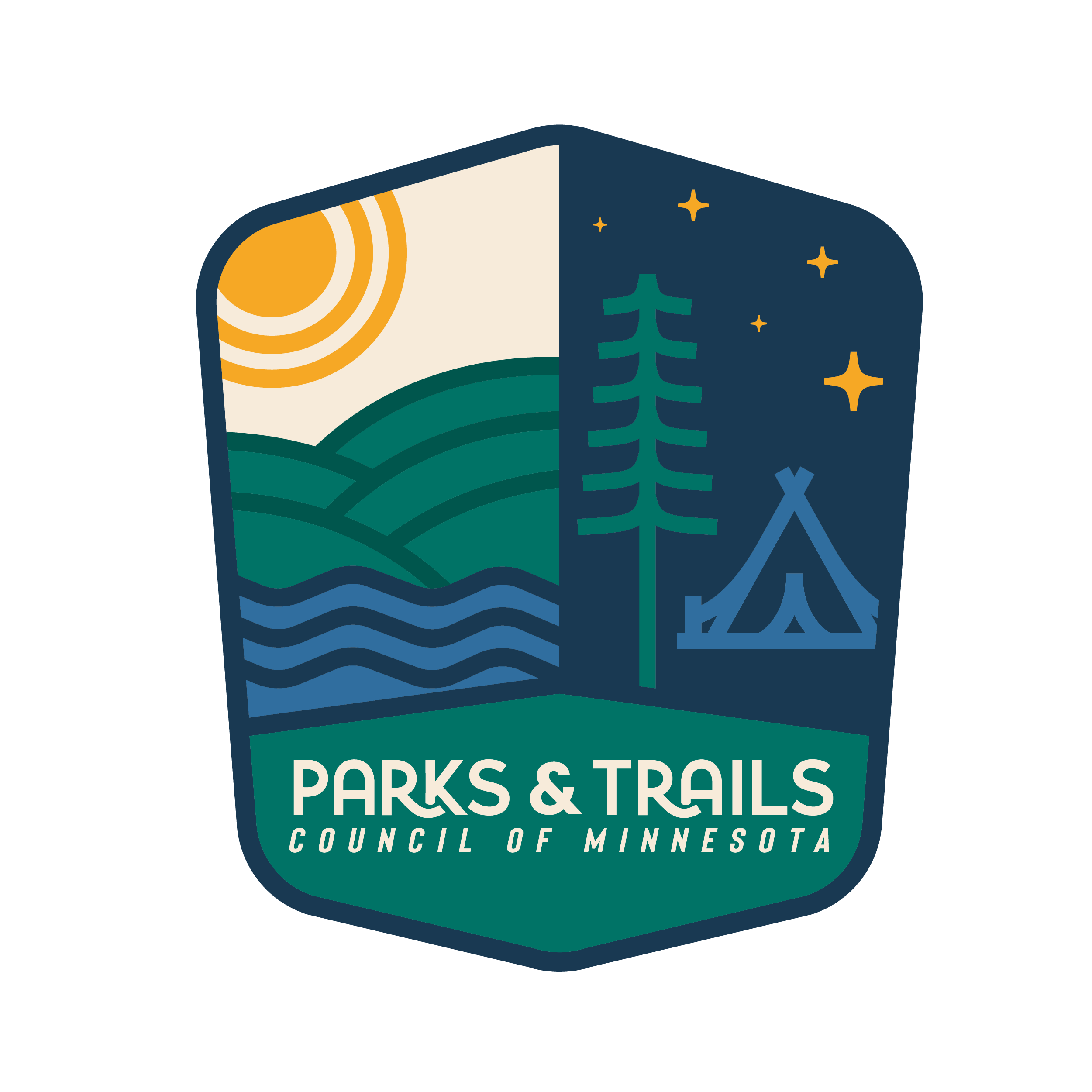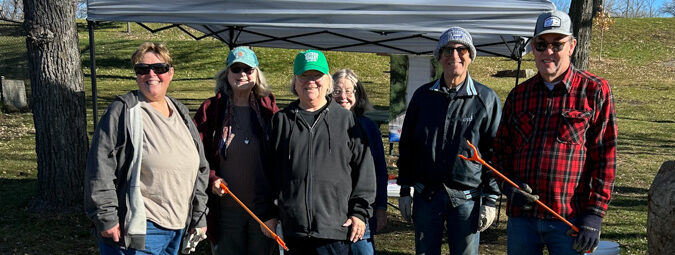The Friends of Minnehaha Park came into being in early 2023. Susan Glenn, a resident of Kenny neighborhood and a lifelong nature and history lover and park user, spent many hours outdoors exploring the park and sharing the love of the park with family and friends. In the last couple of years that interest grew to a passion, as she observed the wear and tear on the park, both the historic infrastructure and the natural environment.
In April, 2023, Susan reached out to the Minneapolis Park and Recreation Board to explore forming a nonprofit to support the park. The Park Board provided some guidance and suggested that Susan submit a Stewardship Agreement with the Park Board and work to build membership.
“I think they really wanted to have a sense if I was capable of doing it,” she says.
Susan reached out to other Friends Groups to learn more about the stewardship agreements they had with their respective parks and trails. Her conversations with these groups gave her ideas for activities to undertake at the park, including the always-necessary task of buckthorn removal. In the process of exploring her options, she also discovered that many people in the local community shared her interest in stewarding Minnehaha Park.
“I found so many allies,” she told Parks & Trails Council in a December interview. “So many people who were passionate about the park and willing to mentor me and support our group.”
The nascent Friends Group had their stewardship agreement with the Park Board approved on June 13th, 2023. From there, it took another two months to get up and running, as Susan worked on recruiting Board members and organizing the group’s first events. The official roster of the Friends of Minnehaha eventually included Rebecca Rice, formerly of Metro Blooms, and MaryAnn VanCura, a retired fellow librarian and social activist.
Over the course of the late summer and into the fall, the Friends of Minnehaha Park organized a number of stewardship and informational events, including several well-attended buckthorn removals, a series of informational sessions about park history and/or nature, and monthly nature walks through the park led by a retired career naturalist. These events proved popular, and Susan feels optimistic about the future.
“It’s my thought that in order to help people be inspired to remove invasives,” she says, “it’s really helpful to have them love the park – which, people already love the park; 2.8 million people or so visit the park every year – but right now, our primary goal is to work in support of the nature in the park and help restore the natural environment.”
Currently, the Friends of Minnehaha are planning their next events and working on a final version of their bylaws and articles of incorporation, with a goal of applying for 501c3 status this spring. This will give their group more options for pursuing their mission of stewarding the park.
The Board are also planning their next steps. They hope to eventually ramp up the buckthorn removals to a monthly event, starting this March. The park uses the high-cut method, which involves leaving a 4- to 5-foot high stump behind and then returning to re-trim the plant until it finally dies. This method has been proven to be effective without the use of potentially harmful herbicides, (the use of which is prohibited by park volunteers), but is much more labor-intensive, requiring regular buckthorn removal to reduce the incidence of buckthorn at Minnehaha Park. In addition, the Friends Board is seeking to forge new and stronger connections with the local BIPOC community, particularly community Indigenous partners, to provide programming that reflects the diverse neighborhood and the park’s rich Dakota history.
All of this represents a lot of hard work and planning, but Susan hasn’t lost sight of the reason she began this journey of forming a Friends group in the first place.
“There’s just such history there,” she says, when asked what she finds special about Minnehaha Regional Park. “You can feel the history in that park. The history and the nature, to me, feels sacred. And I’m sure that’s something of the Indigenous history, that feeling. You just feel it in your bones.”
Photo Credit: Friends of Minnehaha Regional Park

